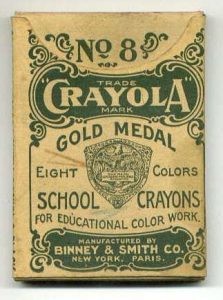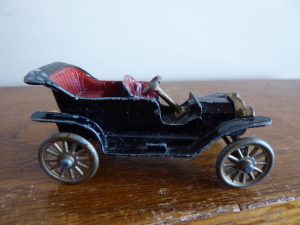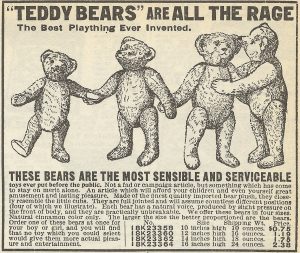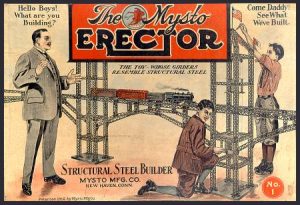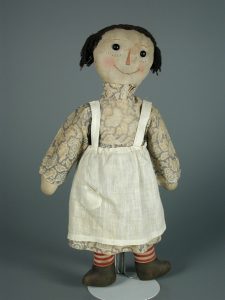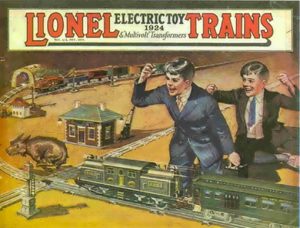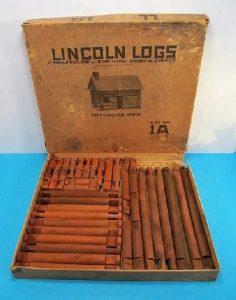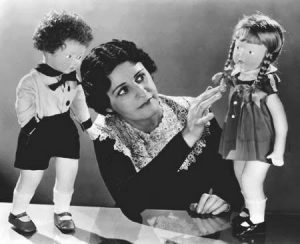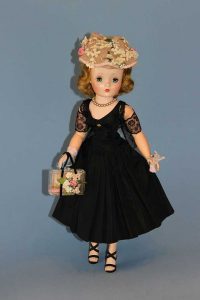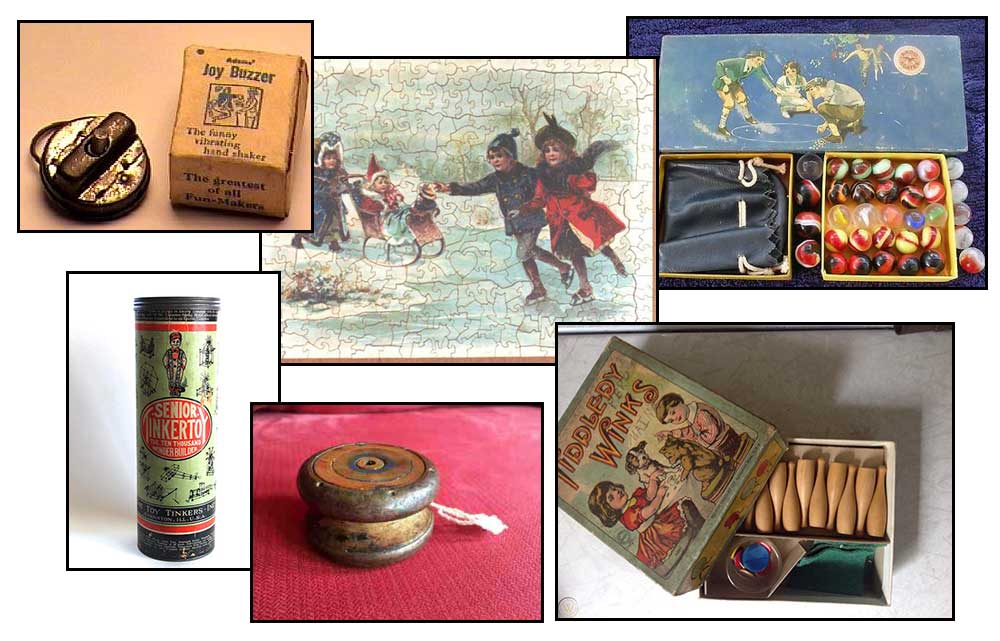Small Home Gazette, Fall 2019
Dear Santa, Please Bring Me….
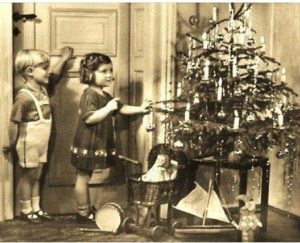 Toys haven’t always been a part of childhood. It was during the Victorian era that adults began viewing play time as central to a child’s development. This is when the tradition of writing to Santa Claus began. Boys and girls would tell him how well they had behaved and to ask for specific gifts.
Toys haven’t always been a part of childhood. It was during the Victorian era that adults began viewing play time as central to a child’s development. This is when the tradition of writing to Santa Claus began. Boys and girls would tell him how well they had behaved and to ask for specific gifts.
So what did children of the Arts & Crafts era want to find under the Christmas tree? Below are some of the most popular toys. See how many you remember.
Crayola Crayons
It was 1903 when the Crayola crayon made its debut. Binney & Smith, a small firm in Pennsylvania owned by Edwin Binney and C. Harold Smith, was in the business of “making color”—red oxide-based paint for barns, carbon black, and white chalk for classrooms (an award-winning dustless variety). Alice Binney, a school teacher and Edwin’s wife, suggested they manufacture an inexpensive alternative to imported European crayons.
In 1902, they made a marking crayon out of carbon black and paraffin with colors soon to follow. Pigments from natural sources—slate for gray; metals, such as iron, for reds; various types of earth for yellows and browns—start off as powders that are pounded, ground, sieved, refined and heated. The temperature determined the shade of color. The formulation of the nontoxic pigments and the wax, as well as how the crayons got their distinctive smell, is still a closely guarded secret.
It was Alice who came up with the name Crayola. She combined the French word “craie,” meaning stick of chalk and “ola” from the word “oleaginous,” meaning oily.
The original colors were the same colors found in an eight-pack today: red, yellow, blue, green, orange, brown, violet/purple and black. They were advertised as non-toxic, not brittle and gloriously colorful. And they sold for a nickel. Since 1903, more than 600 shades of Crayola crayons have been produced.
TootsieToy Diecast Model T Ford
In the late 1800s, Samuel and Charles Dowst were printers of a trade journal for laundry operators in Chicago. They purchased a linotype machine, realizing they could adapt it to make small promotional items for their customers such as thimbles, buttons, and cufflinks. (A tiny iron along with a small thimble and little Scottie dog would later be adopted by Parker Brothers as playing pieces for the Monopoly game.)
The brothers made the world’s first diecast model car, a replica of the Ford Model T, in either 1906 or 1908 (sources vary). It was a big hit, and the success of that first model car led to an extensive product line of toy trains, trucks, buses and airplanes using the TootsieToy brand.
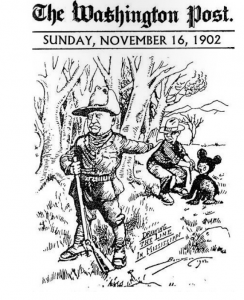 Teddy Bear
Teddy Bear
In 1902, on a hunting trip, President Theodore Roosevelt refused to shoot a bear that trackers had caught and tied to a tree. Washington Post political cartoonist Clifford Berryman immortalized the incident by drawing Roosevelt with a helpless cub.
Stuffed toy bears were suddenly popular. Morris and Rose Michtom, Brooklyn toy shop owners, obtained permission from Roosevelt to sew and sell a cuddly stuffed toy called Teddy’s Bear. In 1903, German toy manufacturer Richard Steiff created a stuffed bear and, due to interest in America, began mass-producing Steiff bears. In 1906, Gund Manufacturing Corporation made its first teddy bears.
An ad in the 1908 Sears Roebuck catalog read: “Teddy bears are all the rage. The best plaything ever invented.” One of the most popular plush toys ever made, it is still referred to as a “teddy bear.”
Erector Set
A.C. Gilbert, founder of the Mysto Toy Company (later A.C. Gilbert Company), got the idea for his erector set while watching a construction site in New York City. Aimed at boys, the first set was manufactured in 1913 and featured girders made of stamped sheet steel, which could be bound together by nuts and bolts.
Additional pieces made it possible to create realistic looking buildings and bridges. And it was the only construction toy set to contain a battery-powered motor. The toy was an immediate bestseller and remained popular through the 1950s and early ‘60s.
Raggedy Ann
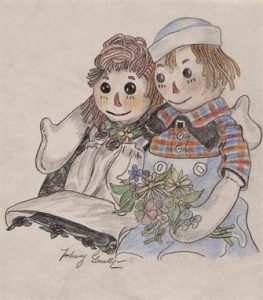 Raggedy Ann was a character created by American writer Johnny Gruelle for a series of books he wrote and illustrated for young children. She was a rag doll with button eyes, red yarn for hair, a triangular nose, and a painted heart with the words “I love you.”
Raggedy Ann was a character created by American writer Johnny Gruelle for a series of books he wrote and illustrated for young children. She was a rag doll with button eyes, red yarn for hair, a triangular nose, and a painted heart with the words “I love you.”
Gruelle received a patent in 1915 to create Raggedy Ann as a doll. The doll was marketed with his 1918 book Raggedy Ann Stories, but her popularity soon made her the main attraction. A sequel, Raggedy Andy Stories (1920) introduced the character of her brother, Raggedy Andy.
The Gruelle family themselves made the earliest dolls but as Raggedy Ann and Andy’s popularity grew, Gruelle gave P.F. Volland, his book publisher, the exclusive rights to manufacture and sell the dolls as long as Volland published his books.
Lionel Trains
The Lionel Manufacturing Company was founded by Joshua Lionel Cowen in 1900 in New York City. Cowen wasn’t the first to manufacture toy trains, but his talents as an engineer and salesman soon put Lionel trains ahead of its competitors. Cowen’s first electric train, the Electric Express, debuted in 1901 and was designed as a display item for toy stores.
The train caught on and soon Lionel was manufacturing model electric trains for consumers. By 1906, with the introduction of preassembled track and a selection of engines and cars, Cowen was well established as an electric model railroad manufacturer.
Cowen was among the finest practitioners of modern advertising. Lionel ads appeared nationally in newspapers, boys’ magazines, and “grown-up” publications like The Saturday Evening Post.
Lincoln Logs
One of the first great building toys, Lincoln Logs has an interesting pedigree. It was invented by John Lloyd Wright in 1916 or 1917, when Wright was working for his architect father Frank Lloyd Wright in Japan. The idea for the toy came from the interlocking log beams the senior Wright used in his design for an earthquake-proof hotel.
Returning to the U.S., John established a toy company (eventually called J.L. Wright Manufacturing) to make and market the toy by 1918. In 1920, he was issued a patent for a “Toy-Cabin Construction.”
The original Lincoln Log set came with notched logs that linked together and instructions on how to build Abraham Lincoln’s cabin as well as an Uncle Tom’s cabin. Subsequent sets were larger and more elaborate.
Chemistry Set
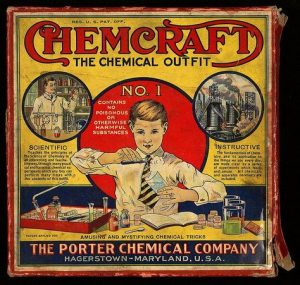 In 1914, John J. and Harold Mitchell Porter started a chemical company in Maryland and, inspired by English chemistry kits designed for scientists, were soon producing toy versions. Their goal was to attract young boys to science. Called Chemcraft, the kits were filled with chemicals, labware, a balance, an alcohol lamp, and helpful instructions. They soon were sold in Woolworth’s and other stores around the country. Prices ranged from $1.50 to $10, depending on the complexity of the kit.
In 1914, John J. and Harold Mitchell Porter started a chemical company in Maryland and, inspired by English chemistry kits designed for scientists, were soon producing toy versions. Their goal was to attract young boys to science. Called Chemcraft, the kits were filled with chemicals, labware, a balance, an alcohol lamp, and helpful instructions. They soon were sold in Woolworth’s and other stores around the country. Prices ranged from $1.50 to $10, depending on the complexity of the kit.
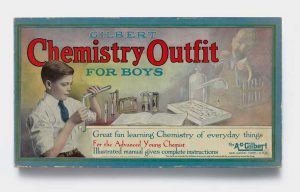
Alfred Carlton Gilbert, the inventor who struck big with the Erector Set in 1913, caught on to the trend and expanded his toy business to include selling science. The A.C. Gilbert Company released its chemistry set in 1923. Again marketed solely to boys, the kit was designed to teach basic chemistry skills. (All of these sets would be considered dangerous by today’s standards—for example, Experiment No. 1 in Gilbert’s kit was “Explosives.”)
Both companies spent decades vying for customers (youth and their parents) with ads in kids’ and science magazines. Chemistry sets may have been the first American toy marketed to parents with the goal of “improving” children for success in later life.
Radio Flyer Wagon
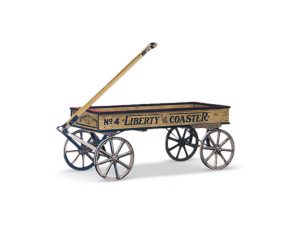 Working as a carpenter in Chicago in 1917, Antonio Pasin built a small wooden wagon to carry his tools. After his customers expressed interest in buying a similar wagon, Pasin focused on building a wooden wagon he called Liberty Coaster. His business grew, and the Liberty Coaster Company was formed in 1923.
Working as a carpenter in Chicago in 1917, Antonio Pasin built a small wooden wagon to carry his tools. After his customers expressed interest in buying a similar wagon, Pasin focused on building a wooden wagon he called Liberty Coaster. His business grew, and the Liberty Coaster Company was formed in 1923.
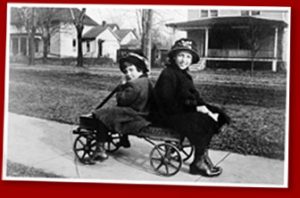 Demands for the wagon quickly outpaced production. Using the mass manufacturing techniques of the auto industry, Pasin began making metal wagons out of stamped steel in 1927. Called the Radio Flyer in honor of his two favorite inventions of the time (the radio and the airplane), the red wagons sold for slightly less than $3. The high quality steel coaster wagons were a huge success and allowed Pasin to increase production while lowering the price. The slogan of the company became: “For every boy. For every girl.”
Demands for the wagon quickly outpaced production. Using the mass manufacturing techniques of the auto industry, Pasin began making metal wagons out of stamped steel in 1927. Called the Radio Flyer in honor of his two favorite inventions of the time (the radio and the airplane), the red wagons sold for slightly less than $3. The high quality steel coaster wagons were a huge success and allowed Pasin to increase production while lowering the price. The slogan of the company became: “For every boy. For every girl.”
Madame Alexander Dolls
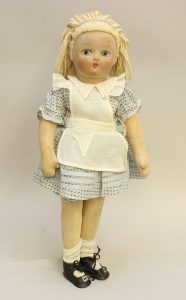
A 1933 Alice in Wonderland Doll, advertised by Gimbel’s department store as their “most popular doll.” It sold for $1.50.
Living above her stepfather’s doll hospital in Brooklyn, New York, Beatrice Alexander grew up surrounded by dolls. With her sisters, she started making cloth dolls representing Red Cross nurses to help his business during the difficult years of WWI.
In 1923, she decided to formalize her doll-making work and started the Alexander Doll Company, adopting the title “Madame Alexander” to suggest the high quality of her dolls. She continued to make cloth dolls, selling her first Alice in Wonderland doll for $14.40 a dozen wholesale.
Alexander chose subjects for her dolls from literature, history, the arts, and cultures of the world. She dressed them authentically. She invented “sleep eyes” and rooted hair, and she made some of the first plastic dolls, shortly after WWII. She created a variety of sculpted doll faces to obtain unique expressions.
She made the first “fashion doll,” Cissy, in 1955, four years before Barbie debuted.
Santa’s bag would have held many more toys. Also popular in this era were Tinker Toys, Tiddlywinks, pop-up books, yoyos, marbles, playing cards, jigsaw puzzles, and novelties such as the Joy Buzzer.









